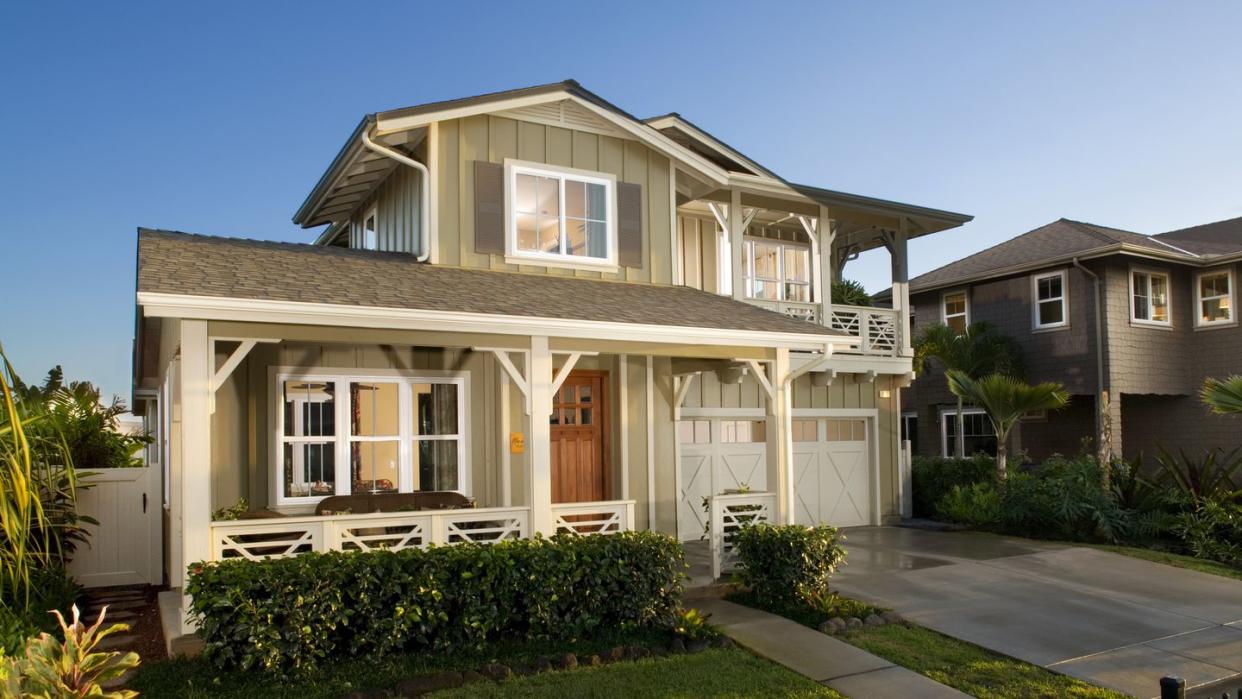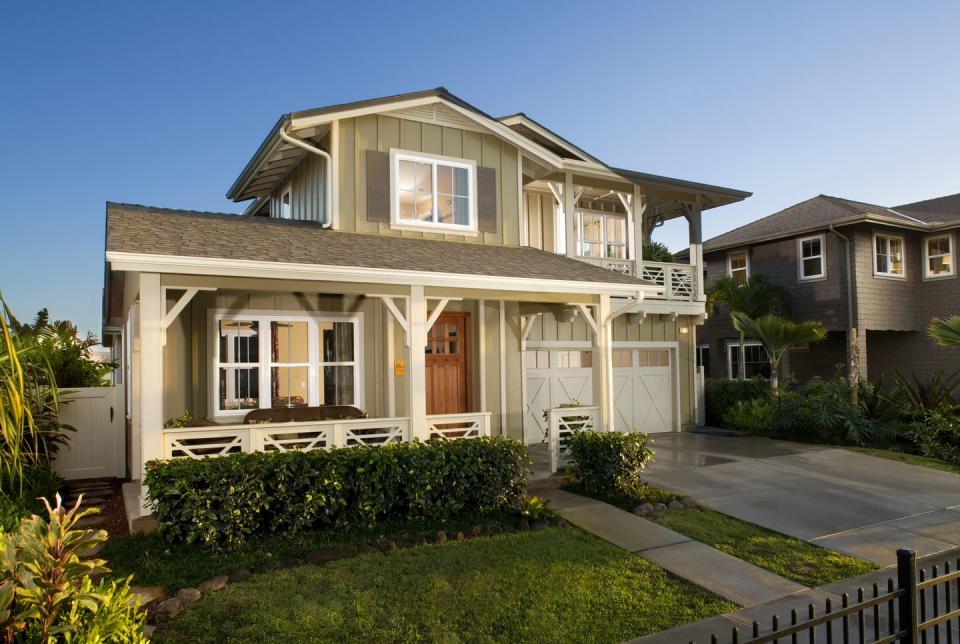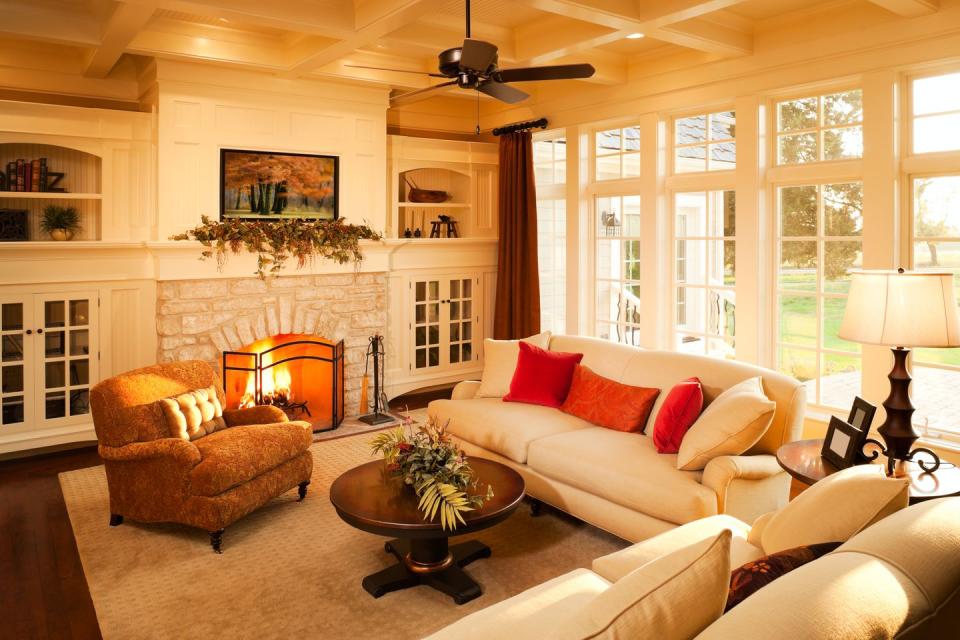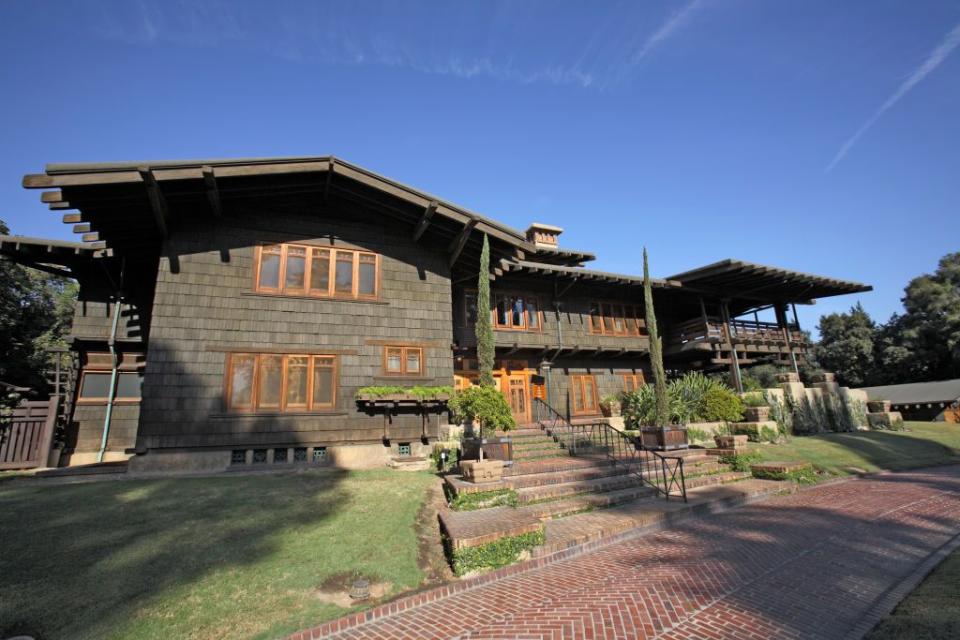Everything You Need to Know About Craftsman Style Houses

- Oops!Something went wrong.Please try again later.
"Hearst Magazines and Yahoo may earn commission or revenue on some items through these links."
The United States is a melting pot of many things, cultures, food types, fashion styles, but especially architecture. All across the country there are neighborhoods where a Victorian home sits next to a ranch next to a Colonial. But one of the most evergreen and persisting style in American architecture is the Craftsman. Named for those who build houses, furniture, and goods by hand and with care, the Craftsman style was design to honor the makers rather than the machines of the Industrial Revolution.
But what really is a Craftsman style home? To break the architectural style down and explain both the history and the details, we tapped Grant Marani, a partner at New York’s Robert A.M. Stern Architects. Read on for more about the popular style and why it continues to be a popular choice for historic and new-build homes alike.
The History of Craftsman Style Architecture
Late-19th century Victorian homes were built for opulence. Made to show off the innovation and advancements of the Industrial Revolution, they steered architecture away from handmade touches and clean lines toward the intricate details only a machine could produce. The Craftsman movement that followed, however, was a direct counter-response to the Victorian style, prioritizing hand-worked goods over the mass-produced. At the turn of the 20th century, the American Craftsman architectural movement spun out of the British Arts and Crafts movement, a similar response to the Industrial Revolution in Europe, which proponents people felt devalued human labor.
According to Grant Marani, a partner at New York’s Robert A.M. Stern Architects, a considerable amount of credit must be given to Gustav Stickley, a “furniture maker turned promoter of the English Arts and Crafts movement in America who popularized the style through his influential magazine The Craftsman in the early twentieth century.”
Stickley’s furniture—and the magazine—emphasized simplicity in form, use of local materials, and honesty in construction. Think about clean, sleek lines and visible hardware. The Craftsman began publishing and selling house plans that embodied these characteristics, which made what Stickley considered to be superior home design available to the masses. These were much more affordable and accessible than highly-priced Victorian plans that often required made-to-order details and professional contractors. Initially, only the specific home plans in Stickley’s magazine were called “Craftsman homes,” but eventually, the moniker was given to the increasingly popular style at large.

Key Elements of Craftsman Style Homes
Craftsman homes have several common features that make them recognizable and just as popular today as they were more than 100 years ago.
The Roof
In stark contrast to the verticality of Victorians, Craftsman homes emphasize horizontal lines, with low-pitched gable (triangular) roofs that extend far out past the home’s exterior walls, often with exposed beams or rafters. Craftsman homes “showcase hand-worked local materials with decorative elements such as brackets, lintels, and rafters,” Grant says, “and display an artisanal approach to surface decoration.”
The Porch
The over-extended eaves of Craftsman roofs lend themselves to having spacious porches on the front of houses, which featured thick, tapered columns along the perimeter. Typically, the exterior of these homes had painted wood siding, but accents of stucco or stone were used fairly often as well—the common theme being an emphasis on earthy tones.
The Windows
Large bay windows or picture windows are traditional elements of a Craftsman. Many of these windows include a small overhanging roof ledge positioned over the window, with rafter tails.
Craftsman Interior Design Style
The Color Palette
Traditional Craftsman homes were often painted in earth tones. Light beiges, earthy greens, and whites were the standard exterior colors. Nowadays, however, you can find the home painted in a rainbow of hues.
The Interiors
The interiors of Craftsman homes are just as distinct and important to the builder as the exterior. Wooden features abound: thick trim around doors and windows, built-in bookshelves and window seats, boxed beams along the ceiling, etc. A prominent fireplace (or two) is also a key feature inside Craftsman homes. Smaller Craftsman homes, with their distinct, cozy rooms, are a favorite to convert to “open-concept floor plans” on home renovation shows, which quite frankly can strip these historic structures of many of the features and charm that first made them so desirable.

Bungalows vs. Craftsmans
Craftsman style is often associated with bungalows, a style of house with origins in the Bengal region of India. A bungalow refers to a simple, small (typically only one or one-and-a-half stories) house with a sloping roof and wide porch along the front. While the Craftsman bungalow is a very popular pairing, the two are not necessarily linked. For example, Spanish Colonial Revival bungalows were quite popular during the 1920s and 30s, and grander displays of Craftsman architecture are also common.
The Craftsman architectural style that gained a strong foothold in California thanks to architect brothers Henry and Charles Greene. “The houses of the architects Greene and Greene of Pasadena, responding to both local building traditions and the influence of Japanese architecture, stand as paragons of Craftsman style,” Grant explains. One of their most well-known residences is the Gamble House (pictured below), which brilliantly shows off their take on Craftsman style, with heavy Japanese influence.

“Though mostly found in California, Craftsman houses appeared throughout the United States in the early twentieth century, thanks to pattern books and the popular press,” Grant says, meaning these well-constructed homes are still widely prevalent across the country, even at 100 years old. They also continue to be an architectural style new construction homes are built in today, especially in areas that value connections to the mountains and forests.
Follow House Beautiful on Instagram and TikTok.
You Might Also Like

